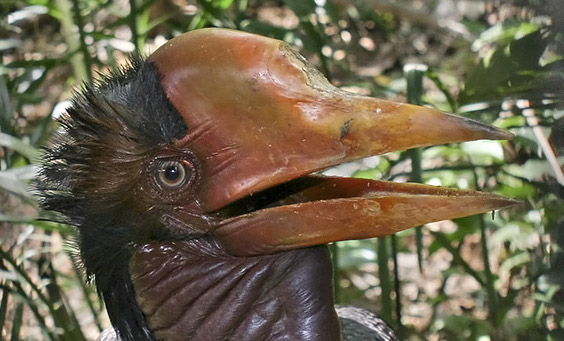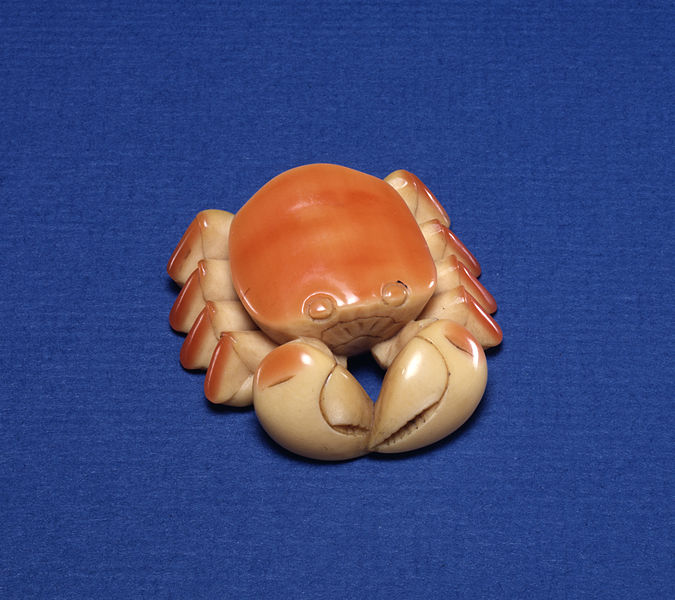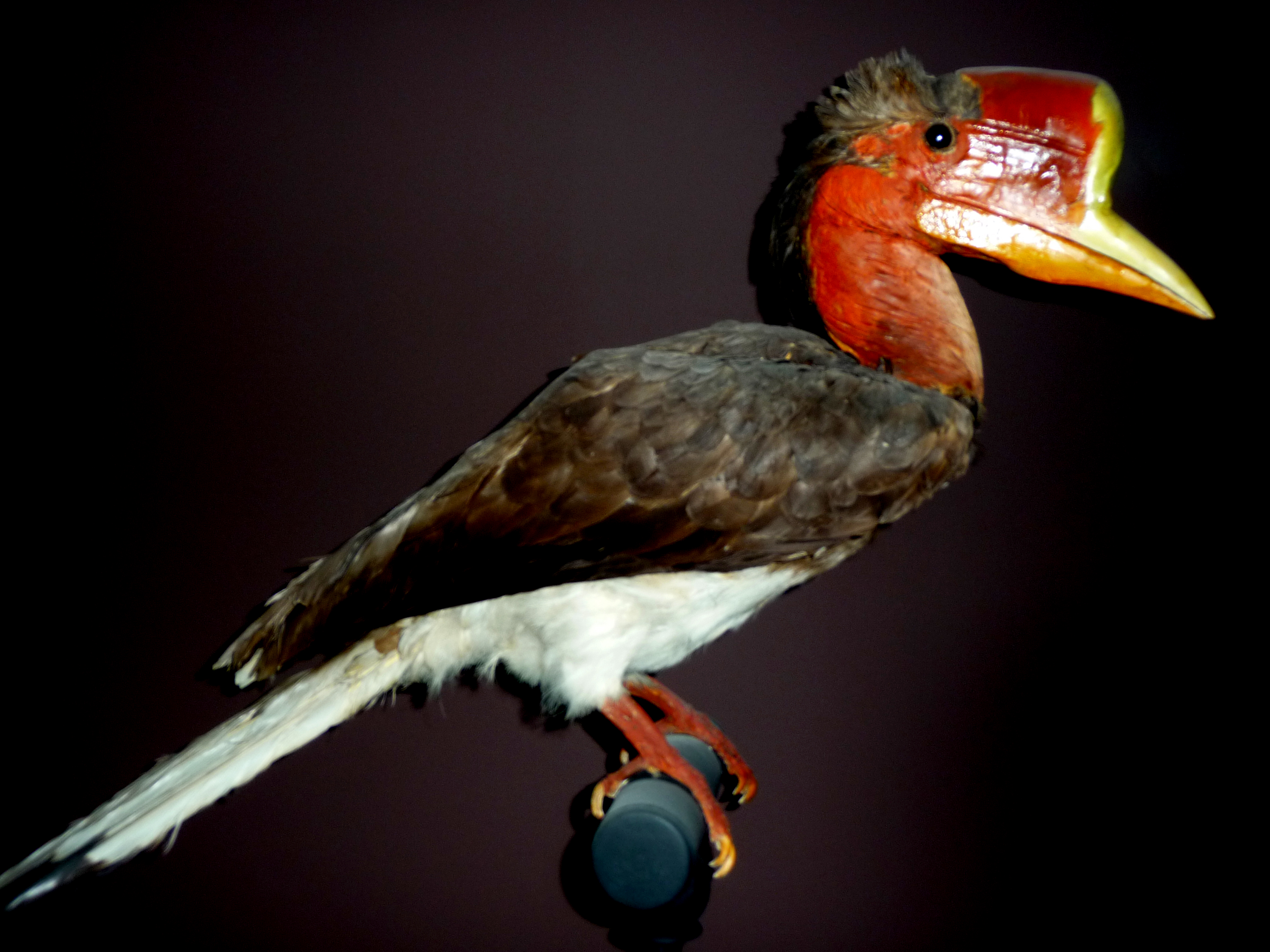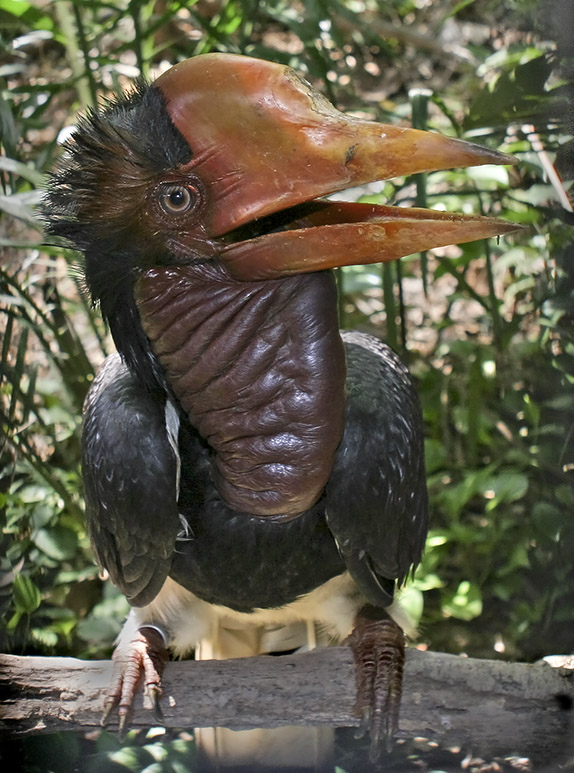The Helmeted Hornbill And Its “Ivory”
The hornbills are an odd-looking family of birds, and the helmeted hornbill (Rhinoplax vigil) is arguably the black sheep of the family. Here, we unfurl its tragic tale.
With its incredible head adornment and at up to 1.8 meters in length, the helmeted hornbill makes quite an impression on anyone who has the good fortune to spot one.
The few that are left are spread thinly across Malaysia, Myanmar, Thailand, Brunei, Singapore, and Indonesia.
The helmeted hornbill’s head adornment is unusual. Normally, a hornbill’s casque is spongy and acts as a resonator, amplifying their calls as they soar through the rainforest. But, in the case of the helmeted hornbill, the casque is solid and, therefore, rather weighty, accounting for around 11% of its weight (3 kg).
Rather than being used for amplification, Rhinoplax vigil‘s solid casque is used as a battering ram during airborne duels with other males. Sadly, I couldn’t find footage of one of these duels, but here’s some footage of a helmeted hornbill at rest:
Sadly for the helmeted hornbill, its casque has long been of interest to another species: Homo sapiens. As with many unusual animals on this planet, humanity saw it, wanted it, took it, and then took it some more until it almost ran out. Consequently, the helmeted hornbill is now in real danger.
With a shrinking habitat and the poacher’s insatiable desire for so-called hornbill ivory, the IUCN recently upgraded the bird’s status to critically endangered. They write:
“An extremely rapid and severe decline is predicted to occur in this species’s population over the next three generations (59 years) as a result of intense hunting pressure and habitat loss. The species has apparently almost disappeared from habitats where it was previously abundant on Sumatra.”
Hornbill Ivory
Hornbill ivory, also called golden jade, is, in fact, keratin — the same stuff that makes up our hair and nails. Although it looks similar to elephant ivory, it is softer and easier to carve. Naturally, it is a golden-yellow color, but as the bird preens, it spreads oils over it, turning the outside a reddish colour.
People native to the regions where the birds live have made jewelry and other items from hornbill ivory for centuries; they believe it changes colour when it is near poisonous food items. Sadly, in the 14th century, Chinese travelers were introduced to the substance, and it became sought after further afield.
In the Ching dynasty, which ended in 1644, hornbill ivory was more highly prized than jade or elephant ivory. And, in 2011, there was a rebirth of Chinese interest in these keratinous carvings.
Today, antique hornbill ivory can be bought legally in some parts of the world, in the same way that antique elephant ivory can; however, hornbill ivory is more restricted, making it more expensive than elephant ivory.
Can We Save The Helmeted Hornbill?
Tragically, of course, hornbill ivory’s scarcity makes illegal trade incredibly lucrative. Humans are stupid like that — if something is difficult to find, they want it so badly they will trample to death anything that stands in their way; even if the thing they desire is essentially useless.
According to Nigel Collar, a senior research fellow for BirdLife International, crime syndicates employ locals to shoot any hornbill that they see in the hope that they might occasionally kill a helmeted hornbill.
To intensify the bird’s already difficult situation, these birds only breed once a year. The mother seals herself into a nest in the trunk of a tree and is entirely reliant on the male bird to bring them food; if the male is killed, the whole family will likely die.
Organisations, such as the Environmental Investigation Agency (EIA) and TRAFFIC are seizing helmeted hornbill ivory wherever they can find it and plotting the data on maps. From March 2012 to August 2014, at least 2,170 heads and/or casques were seized in Indonesia and China. The hope is that by mapping this data, they might be able to narrow down hotspots for trafficking and poaching.
As always, until demand is nipped in the bud, this type of shady work is going to continue. As Kanitha Krishnasamy, TRAFFIC’s Senior Programme Manager says, “Markets selling helmeted hornbill products openly, such as those in Laos, which cater to a largely Chinese clientele must be shut down. Otherwise, law enforcement agencies will constantly have to battle against the open supply that undermines all international rules and law enforcement effort.”
Research in 2013 carried out by Yokyok Hadiprakarsa concluded that at least 500 adult helmeted hornbills were killed every month in just one Indonesian province; that’s 6,000 a year.
Sadly, the helmeted hornbill’s days are numbered, unless something drastic changes.
MORE NATURE:
HOW CAN WE SAVE THE RAINFOREST?
EARTH’S MOST SURPRISED LOOKING BIRD





















